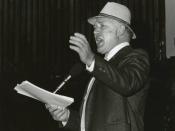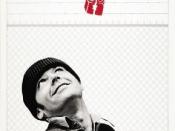Throughout Ken Kesey's novel, One Flew Over The Cuckoo's Nest, two major themes are stressed: religious symbolism (mostly concerning the main character, McMurphy), and the conflict of individuality versus conformity. Unfortunately, Milo Forman overlooks these two important themes in his film version, and thus weakens the core content of the film.
The first thing you notice in any film is the physical appearance of the characters. In Kesey's novel, the nurse's starch-white uniform, attempting to hide her large breasts, the bizarre orange color of her nail polish, and the very unfeminine items in her purse display the concept of conformity, with an evil twist. Conversely, in Forman's film, the Big Nurse is a small and kindly looking woman. Her entire attitude creates the wrong mood and makes her come off as being nice and sweet, as opposed to Kesey's version of the dominating and cruel nurse. The actress who portrayed Big Nurse, Louise Fletcher, also didn't have the breasts to fill the part.
The nurse was supposed to have that hidden womanly quality under her uniform, which she desperately wanted to hide. But with Fletcher as the nurse, the entire scene with McMurphy finally revealing her womanhood and ending her dominance was eliminated from the film.
In Forman's film, the narrator as well as point-of-view are also unfortunately altered. In the book, Chief Bromden was an outsider looking in who saw and heard all. With the Chief as a guide, the reader got to see what the ward was like through the Chief's eyes, and gets his point of view as well. Through flashbacks, nightmare scenes, and various other things that only a patient in a mental ward could provide, the reader gets the complete effect of being inside the ward and receives the full comprehension of both the...


